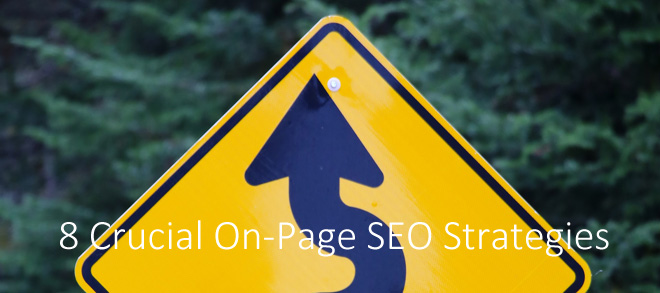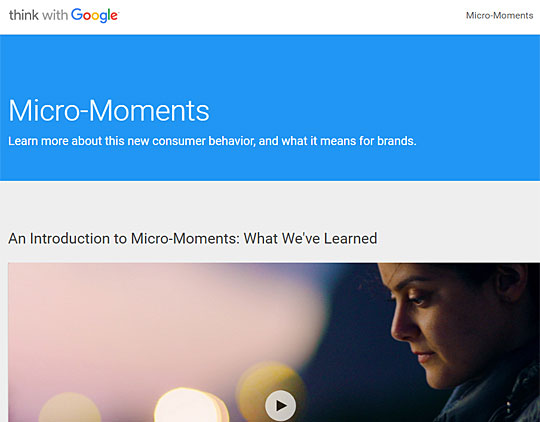A great digital presence is a mixture of unique and inspiring content, healthy social engagement, and good SEO foundations. Have you made a New Year’s resolution to improve your SEO game in 2017? You’re in the right place.
What key on-page SEO developments are going to be shaping the web industry in 2017? Here are some strategies you need to adopt in order to succeed at running your business online this year.
1. Take A Holistic Approach To SEO
SEO in 2017 is about so much more than just monitoring rankings and tweaking keywords – it’s important to acknowledge the dynamic interplay between user-experience, conversions, and SEO.
You will get much more our of your SEO efforts if you focus on your online brand as a whole.
- To have a healthy and rankable online environment, it pays off to listen to users and meet their expectations as much as you can. You can gather user information by conducting thorough keyword research, running user surveys and usability tests; and by frequently auditing your site and its analytics. Try talking to people too – it helps to stay focused on the people behind the data. Use social media as a crucial soundboarding tool to help you build an accurate picture of your customers. (Read our Social Media Checklist to help you get started).
- Investigate poorly performing landing pages and high bounce rates – is the design putting people off? What about the copy? Is there a clear call to action? Are you offering value?
- Instead of chasing after an empty traffic increase, focus on traffic quality. Make sure that your web pages offer useful content that answer people’s search queries. Conversion rate optimization is a key strategy that will help you maximize your current online reach. Test all parts of your website – headings, calls to action, copy and visuals.
- Social media is a great place to go and promote content, as well as find new ideas for posts and blogs. Integrate SEO content production with social listening.
2. Micro-Moments On Mobile
Good mobile SEO isn’t just about having a responsive website, it’s about crafting a user journey that will actually work on mobile. People are spending more and more time on their mobiles and undertaking complex transactions – don’t fob them off with a poor site that lacks content and purpose.
It’s important to map out exactly what users will do (and may want to do) with your mobile website – give them an experience that they can enjoy. Bad mobile engagement and website performance will hold your business back.
- As web pages get squeezed onto smaller screens, the emphasis is shifting to supporting the user through a series of micro-moments. Not sure what a micro-moment is? Read this Google guide. Micro-moments are small incremental actions (micro-decisions) that users make on your website that contribute to the overall user-journey. They can include things like ‘do I click there’ and ‘how do I make this image bigger’? When designing a page for mobile, ensure that you’ve taken into account all the little moments that contribute towards a macro conversion like a purchase. By factoring in micro-moments, you will enable users to make fast decisions – increasing website dwell time, conversions, and sales.
- Rigorously test your mobile user-experience, paying special attention to navigation and menus as they often impact mobile usability. Don’t opt for gimmicky and flashy designs – clarity and purpose are key.
- Use accelerated mobile pages to help speed up your site on mobile.
3. Well-Ordered Landing Pages
A great page structure helps users and search engine crawlers make sense of your content. Make sure that yours favors coherence and logic. Avoid bland headings, and use formatting best practices to help structure your pages and content.
- Use plenty of headings, and be careful what you put in your H1, H2s, H3s, H4s etc. Avoid having loads of repeated or empty headings – you want yours to count. On the other hand, you don’t want to over-optimize and go with headings that will make you look like you’re trying to keyword-stuff.
- Factor in people’s fast online reading habits and use plenty of bullet points, lists and subheadings to help break up large chunks of text. Use the bold tag and learn how to break up copy with well-timed images.
- Unique title tags and meta descriptions will help you order your pages. They should set the right expectations for the user and the search engine. Instead of worrying about branded terms – focus on the value you’re offering. Avoid anything that seems too gimmicky or makes you look too try-hard. Use natural language.
- Always have a clear call to action (especially on landing pages), so that the user is clear on where they need to go next. Focus your page structure around information and action.
Pro tip: Got too much going on for one landing page? Create a menu that will allow users to navigate across different features. See how the Shopify online store page pictured below offers users up to seven different landing page options that take you through the whole product offering.
- If you want to encourage social shares and commentary – make it easy! Use social sharing plugins to make the process easy and user-friendly. Consider whether a shares counter will encourage others to do the same.
4. Dynamic Data For 3D Experiences
Take your website from flat to 3D.
Getting your website ready for search in 2017 is about working with search engines to give them as much data as possible about your business and website. Dynamic search results get tons of engagement and clicks, as do their equivalent rich cards on mobile.
- Use structured data in your website code (using schema.org) to give search engines as much information as possible about your website’s content. Tag up products, reviews, videos, URL breadcrumbs, and any other useful data. Here are some more details on getting the most out of enhanced search.
- Try to make your content as search-friendly as possible by answering informational search queries and providing step-by-step instructions. ‘How to’ lists and detailed guides are always a good place to start. See what other content has made it into the featured snippets box – see if you can replicate them (or do better).
5. Relevant Visuals With Genuine Brand Value
Content isn’t just about the words that you use – it’s the images that accompany the words.
- Optimize image file names and alt text descriptions to reflect the themes of your website. Always try to choose images that are in harmony with your website’s themes in order to maximize relevancy. Try not to overuse stock imagery either – it stops your website from being unique and can harm conversions.
Pro tip: Want to up your visual game? Go for fun custom illustrations like this one from Basecamp on their Facebook page. Fun illustrations are great for social media engagement, but they also help you build a better brand image overall.
- Always use quality imagery. Have an overall image selection policy so that you can keep on top of your website’s overall look and feel. If you use video, make sure that they are optimized for search engines too. Video is great, but don’t just use it for the sake of it – don’t commit any of these Video Marketing Sins. Always have purpose behind your content.
- An outdated web design could hurt your conversions. Try to keep your page refreshed regularly to avoid looking dated.
6. Content That Comes From Your Community
A lot of businesses churn out content without really thinking about their audience. Content that is produced and then never consumed isn’t doing your brand’s SEO efforts any favors. Focus on creating quality content, rather than churning out the same old stuff.
- Use market research and customer data to construct branded buyer personas to help you target content effectively. Detailed buyer personas are a key pillar of inbound marketing success and will stop your content from becoming unstuck.
- Use your communication channels to talk to your audience and find out what’s on their mind. By forging relationships and asking questions, you will be able to create effective content that people are likely to share. Observe what your audience are saying, tweeting, liking and sharing. Get under their skin. Roundup posts are a brilliant way to use community knowledge for great content – and people love to share their opinions…
- All content for SEO purposes must be heavily promoted. Remember, promotion and outreach are vital in order to increase links and brand mentions. You will need to promote on social media and social bookmarking sites, but you’ll also want to grow your reach and find new influencers through email marketing and content outreach. When reaching out to people, always make sure that the relevancy connection is there. Editors will want content that will engage their audience – pitch to the right people. Here are some awesome email prospecting tips you’ll want to master to help you score press links.
7. Optimization For Performance & Purpose
Your website must fulfil a purpose – get people from A to B, help them make a purchase, download content, find information etc. To have a rankable and user-friendly website you must optimize your site for performance.
- Slow website? Slow load times can happen for a number of reasons. Having redirects, large images, and poorly coded pages are just some of the potential causes. Don’t be afraid to have a look at the full technical picture of your website – including servers and scripting. Investigating speed issues will pay off. For starters: minify your CSS, compress images, leverage browser caching, clear up your backend and invest in quality web hosting.
- Purpose – it’s very important to be clear on what web pages are trying to achieve. Mismatched purpose is going to confuse users and search engines. This extends right through from copy, to metadata and imagery. Always have the next stage of the user journey in your mind. If you have pages that seem too long – separate them out into subpages, or explore web formatting to allow you to fit more content under one URL.
8. Content Culls Aren’t Always A Bad Idea
It might seem counterintuitive, but sometimes the best thing you can do for your website is streamline your content.
- Are you ranking for lots of irrelevant phrases? Do you have some old skeletons in your closet that need to go? Don’t be afraid to get rid of content you no longer need.
- Focus on investing in quality, purposeful content instead of constant churn. Having a content break can sometimes work wonders.
- Sometimes, less is more. It might be worth culling and streamlining content, rather than barking up the wrong tree. Focus on offering value and contributing to your community, not fulfilling internal targets.
Great on-page SEO is all about listening to your audience and delivering an experience that they can enjoy. Use social media as a key research and engagement tool – no digital discipline exists in a vacuum.
On-Page SEO Infographic
Below is a handy Infographic from Shane Barker explaining the On-Page SEO Factors in more detail.
See related post: 5 Search Studies That Will Reshape The Way You Think About SEO
[Main Photo by Mark König on Unsplash; Infographic by Shane Barker]; Lens Guy photo by Evgeni Tcherkasski on Unsplash; other images from their respective websites and/or social platforms]
Gareth Simpson – Technical SEO & Startup Founder
Gareth has worked as an SEO for almost a decade now and has recently started freelancing as a technical SEO in Bristol. His SEO specialisms are content and blogger outreach…and he likes green tea.





Comments are closed.